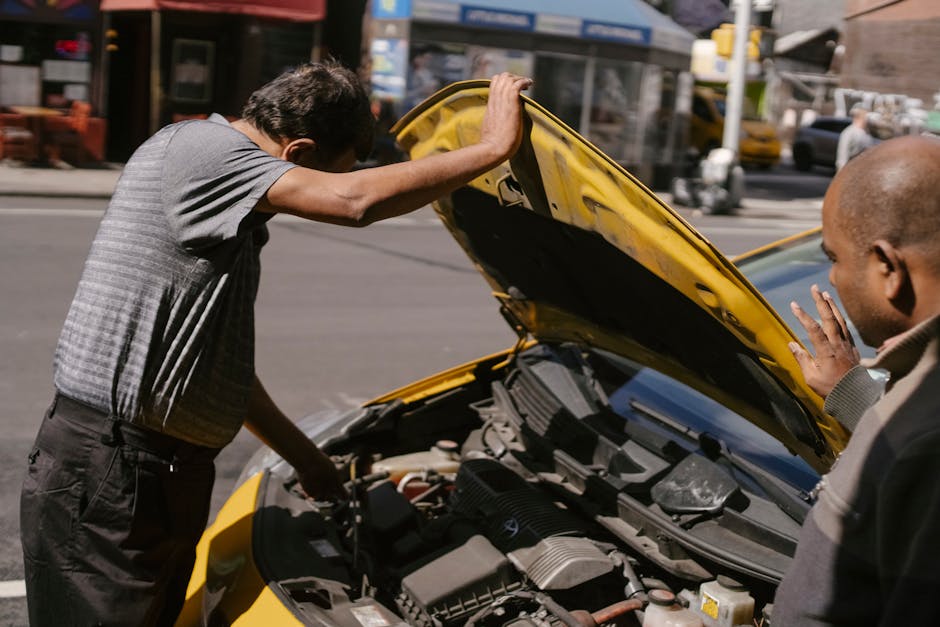Hey guys this is AC Service Tech and
today what we're looking at is the basic refrigeration cycle. Alright, so you can
take this as looking at it as if it's a it's a standard air conditioning system. Alright, so you have two items that separate the low pressure and the high
pressure on this system and the one is the compressor that's up high and then
the other is the metering device where in this picture you see it's down low.
So how the refrigeration cycle works is it takes low pressure and low
temperature vapor refrigerant, it comes into the compressor, and out of the
compressor it comes out as a high temperature, high pressure vapor
refrigerant.
In fact it's at its hottest spot on the entire system right there. As
it enters into the condenser coil it starts rejecting heat. As it rejects heat
it starts turning into a saturated state in the middle of the condenser coil.
Alright, a saturated state is where vapor and liquid both exist at the same time.
So right there, right after the saturated state where it turns into a
complete liquid until where it comes out right next to the service valve, the
temperature decrease as its rejecting heat, the temperature decrease in liquid
form is called the subcooling.
The saturated state is is where it's
transferring most of its energy at. Alright, the refrigerant is what is
carrying the heat and moving it, rejecting it and absorbing it in the
refrigerant itself. And most of that energy transfer occurs right in that
saturated state. Alright so it comes from the saturated state in the middle of the
condenser coil, it continues to reject heat as a complete liquid, until it comes
out of the condenser coil. Then it comes down in the picture here and then it
makes a left and then it goes in through the filter dryer.

The filter dryer is
there to absorb any moisture in the system. It has a fixed capacity
and that's it. It goes through that and then it hits the metering
device. The metering device allows for a pressure change.
When you have a pressure change so you have high temperature, high pressure liquid refrigerant coming into the metering device and then it turns it
into a low pressure then what happens is it automatically makes it a low
temperature as well. So if you decrease temperature then pressure will decrease.
If you decrease pressure then temperature will decrease. So in this
case we have a high pressure, high temperature liquid refrigerant coming
through and hitting the metering device. The metering device is only going to
allow a small amount through and then it turns into a low pressure,
low temperature eighty percent liquid 20% flash gas mix but it's mainly going
to be a low temperature, low pressure liquid until it gets to the
middle of the evaporator coil.
So the refrigerant is actually absorbing heat
once it enters into the evaporator coil. As it absorbs enough heat it turns into
that saturated state in the middle of the evaporator coil, where most
of the energy absorption is taking place and then right after that is where it
turns into a low pressure, low temperature vapor. Right after the
saturated state it turns into that low pressure, low temperature vapor
until where it comes out of the evaporator coil. It's still absorbing
heat. As it comes out of the evaporator coil, right at that point right there, the
temperature increase from the saturated state in vapor right at the end of the
saturated state in vapor to where it comes out, that's called the superheat. If
you continue along you keep coming up as a low pressure, low temperature vapor.
You come up and then you make a right and then you come over to the service
valve.
So that's where we take a superheat reading at. So if
you took right in the middle of the evaporator coil right after the
saturated state where it turns into a complete vapor the temperature increase
from there, all the way over to the service valve, next to the compressor
that's called the total superheat. After that it just enters back
into the compressors and low pressure, low temperature vapor refrigerant and
the refrigerant cycle starts all over again. Well I hope you enjoyed yourself and we'll see you next time at AC Service Tech channel!.
